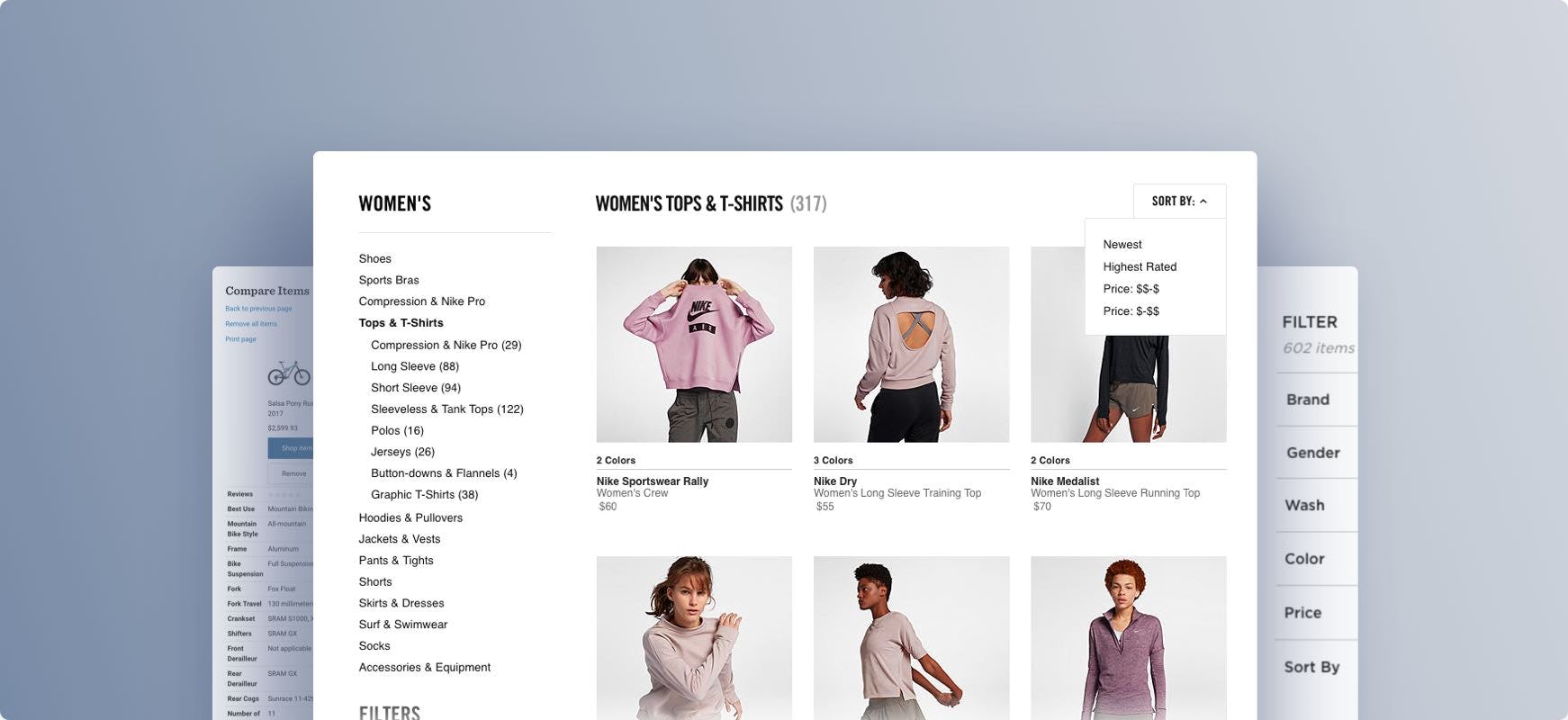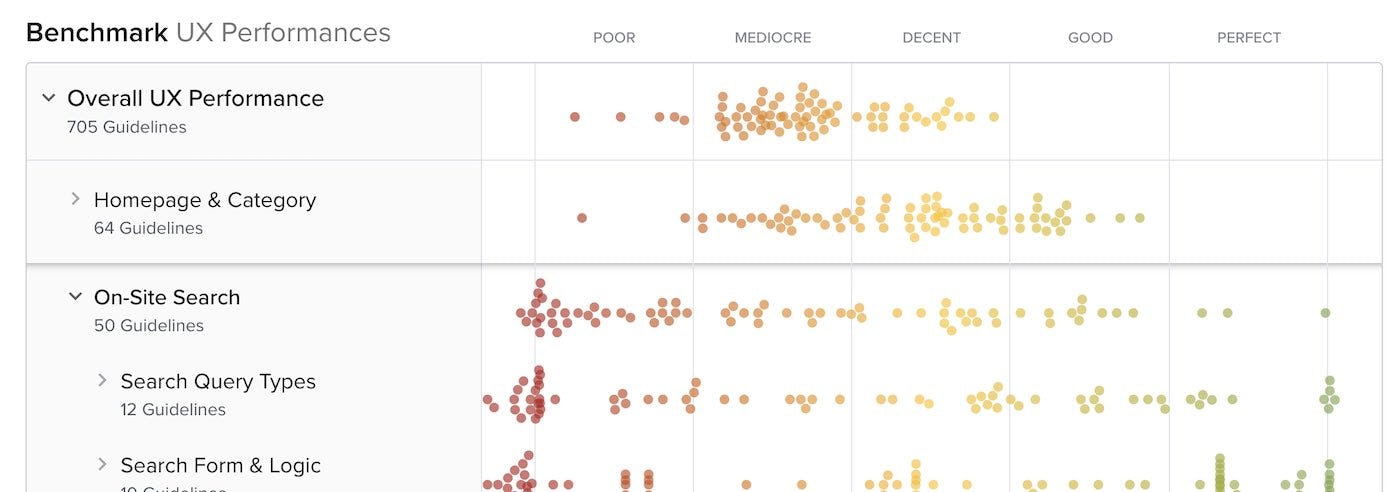[VIP] Baymard Institute: E-Commerce Product Lists & Filtering UX
How do users scan, filter and browse your search results and category pages?
![[VIP] Baymard Institute: E-Commerce Product Lists & Filtering UX](https://design.rip/uploads/cover/blog/baymard-research-ecommerce-product-lists.jpeg)

·
Without the right tools, finding just the right product can be an almost impossible task for the user. E-commerce product lists and their filtering and sorting tools determine how easy or difficult it is for the user to browse the site’s product catalog.
This is why we at the Baymard Institute have conducted an extensive large-scale usability study of how users scan, evaluate, filter and sort products within a product listing page.
A group of users age 21-56 were recruited to test 19 leading e-commerce sites across 8 different verticals. Despite testing multi-million dollar sites, more than 700 usability issues related to product lists, filtering and sorting, arose during testing. All these issues have been analyzed and distilled into 93 concise guidelines on product list usability.
From this research study we’ve uncovered exactly what users expect as they interact with product lists on e-commerce sites, what typically goes wrong in the process, why it goes wrong, and what changes e-commerce sites can make to avoid these issues. In short: how to design a high-performing product list experience for your users.
After all, if users can’t easily browse your product lists, they can’t easily find what they are looking for – and if they can’t find it, they can’t buy it.
This page provides you an overview of our research specific to Product Listings & Product Filtering UX. All of this research is available as part of Baymard Premium.
·
The Current Product Listings & Product Filtering UX Performance
The product list effectively dictates product presentation and provides the pathway from category pages and search results to the all-important product page.
During Baymard’s Product Listings & Filtering study, sites with mediocre product list usability saw abandonment rates of 67-90%, whereas sites with just a slightly optimized toolset saw only 17-33% abandonments for users trying to find the exact same types of product. This translates into as much as a 4-fold increase in leads.

·
From testing it’s clear that a unity of product list design, filtering and sorting is required – the chain is no stronger than its weakest link:
- With the right filters and a clear filtering interface users are able to narrow down a product list with thousands of generic products to only a few items relevant to their unique needs and interests.
- Solid sorting features enable users to order products by the attributes they care about – something that can dramatically speed up the user’s product exploration and selection process.
- A balanced product list design provides users with a better overview of the products available and help them make a more informed evaluation of which items to engage with (and which they can safely skip).
At Baymard we’ve subsequently benchmarked benchmarked the 177 top grossing US and European e-commerce sites twice across all the 94 (weighted) Product Listing guidelines; leading to a massive database of 7840 UX performance scores and 5,600 best- and worst- practice examples of Product List UX.
Analyzing this dataset we’ve found the average site to perform mediocre at best, and 36% of sites to have such severe design and feature flaws that it was downright harmful to their users’ ability to find and select products. Product list usability is generally characterized by being both overlooked and poorly understood. On average each site will need to make 35 design changes to achieve optimal product list usability, revealing widespread mediocrity. There’s a clear lack of knowledge about and attention paid to the design and features of product lists. Perhaps most critically, many sites have adopted a fundamentally flawed “one size fits all” approach which greatly impedes the user’s product finding ability.
This is a sub-set of the full benchmark which includes 177 e-commerce sites.
View our full UX benchmark
·
10 Research Reports on Product Listings & Filtering UX
PAID RESEARCH CONTENT
All 94 Product Listings & Filtering research findings are available as part of Baymard Premium, and are divided into the following 10 reports (410 pages of research findings in total):

What's Your Reaction?













![[VIP] DesignCode: Build Beautiful Apps with GPT-4 and Midjourney](https://design.rip/uploads/cover/blog/designcode-gpt4.webp)
![[VIP] AppCoda: Mastering SwiftUI - Professional Packet (Updated 04.2023)](https://design.rip/uploads/cover/blog/appcoda-mastering-swiftui-professional-packet-worth.webp)
![[VIP] AppCoda: Beginning iOS Programming with Swift (Updated 04.2023)](https://design.rip/uploads/cover/blog/appcoda-beginning-ios-programming-with-swift.webp)
![[VIP] Whoooa! 156 vector Lottie animations](https://design.rip/uploads/cover/blog/whoooa-156-vector-animations.webp)








![[VIP] Master UI Design Elements: The Hidden Secrets](https://design.rip/uploads/cover/blog/uilearn-LVnCO.webp)